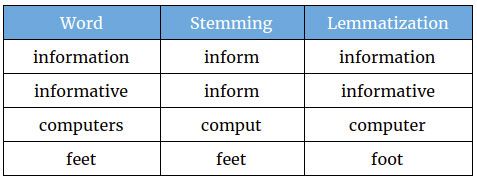TL;DR – In NLP, stemming trims words to their root forms by removing affixes, while lemmatization reduces words to their dictionary base form, considering their context and meaning.

Table of Contents
Stemming and Lemmatization in Natural Language Processing
In the domain of natural language processing (NLP) and text analysis, text normalization plays a pivotal role. Two of the most popular normalization techniques used in the realms of data science and artificial intelligence are stemming and lemmatization. They serve as essential preprocessing steps for various tasks like sentiment analysis, information retrieval, and more. This article delves into the intricacies of both techniques, their algorithms, and their significance in today’s machine-learning landscape.
Stemming:
Definition and Purpose: Stemming is the process of reducing an inflected or derived word to its base or root form. The primary intent is to map related words to the same representation to aid in tasks like search and analysis.
Example: Buy >> Buying, Bought, Buys
Algorithm and Tools: The most popular stemming algorithm, particularly for the English language, is the Porter stemmer. Developed by Martin Porter, it trims off suffixes (and in some cases prefixes) from words. Other notable stemmers include the Snowball stemmer, a more aggressive approach that supports multiple languages.
Use in Python with NLTK: Python’s Natural Language Toolkit (NLTK) provides support for stemming through the nltk.stem module. For instance:
from nltk.stem import PorterStemmer
stemmer = PorterStemmer()
print(stemmer.stem("running"))This would output ‘run’, the root form of the word.
Drawbacks: Stemming can sometimes be imprecise. Over-stemming occurs when too much of the word is trimmed, potentially changing its meaning, while under-stemming is when two related words are stemmed to different forms.
Lemmatization:
Definition and Purpose: Lemmatization is a more sophisticated process than stemming. It involves reducing a word to its base or dictionary form, known as a lemma. Unlike stemming, lemmatization considers the meaning of the word, its part of speech, and morphological analysis to achieve this reduction.
Example: Buying, Bought, Buys >> Buy
Algorithm and Tools: The WordNetLemmatizer, available in NLTK, is a common tool used for lemmatization in the English language. It uses the WordNet database to look up lemmas. Other tools, like SpaCy, also offer lemmatization capabilities, often used in more advanced NLP pipelines.
Use in Python with NLTK: Using the WordNetLemmatizer from the nltk.stem module:
from nltk.stem import WordNetLemmatizer
lemmatizer = WordNetLemmatizer()
print(lemmatizer.lemmatize("running", pos="v"))This would return ‘run’, the base form of the word ‘running’ when considered as a verb.
Comparison and Use Cases:
- Accuracy: Lemmatization, being a more involved process, is generally more accurate than stemming as it considers the meaning of the word, using morphological analysis and part-of-speech tagging.
- Speed: Stemming is typically faster, being a rule-based approach that cuts off affixes, making it more suitable for applications like search engines where speed is crucial.
- Applications: Both techniques are prevalent in various NLP tasks, including chatbots, sentiment analysis, and text preprocessing for machine learning models. The choice between them depends on the dataset, desired accuracy, and computational constraints.
Challenges:
While both stemming and lemmatization are invaluable in text normalization, they are not without challenges. The precision of these techniques varies across languages, with the English language having relatively mature algorithms. Inflectional forms, nuances in part-of-speech, and the inherent ambiguity in natural language make the task non-trivial.
Conclusion:
Stemming and lemmatization are cornerstone techniques in NLP. As technology progresses and tools like ChatGPT and others become more sophisticated, the importance of accurately understanding and processing the semantic essence of words will only grow. Whether you’re looking to dive deep into sentiment analysis or develop the next generation of chatbots, a sound grasp of these normalization techniques is indispensable.
FAQ
What is Stemming and Lemmatization?
When to use Stemming and Lemmatization?
Published on: 2022-03-28
Updated on: 2024-07-30